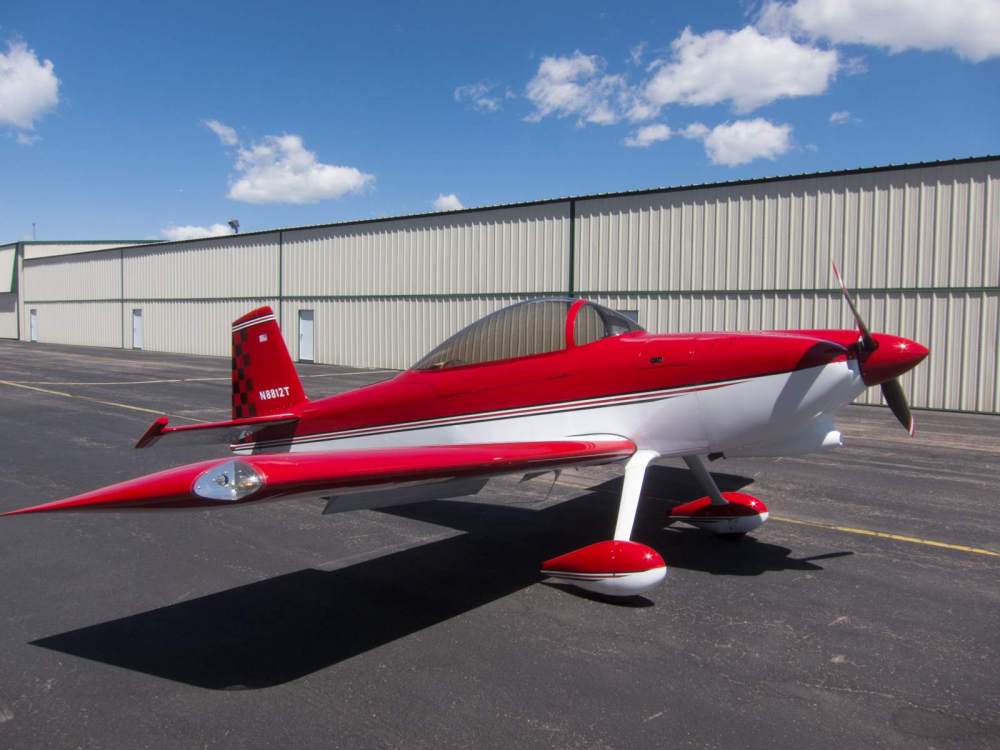Leaderboard
Popular Content
Showing content with the highest reputation on 06/27/2018 in all areas
-
I was holding for IFR release at MYF. A Cessna took off about 20 mins before me. I caught up to him just before Yuma. I'm literally at home right now and he's still in the air. 20180626_154006.mp45 points
-
Good observations and so sadly so typical. The pattern is a more risky aspect of the flying we do; especially when we include the runway as well and I believe strongly that the risk all go up dramatically from flying poor patterns. Mark @midlifeflyer is right above in that this risk doesn't stem from lack of engine reliability. But @Mooneymite and @Marauder nail it above. Its the very fear of banking that leads to wide and long patterns, that sets up pilot for all the common mishaps since it leads to going slow and level with lots of power once the pilot gets low. It especially contributes to the fatal stall spin accidents and has certainly got to compound much of the runway loss of control we see from pilots dragging it in with lots of power to the runway. Such a practice leaves them with large excess of forward energy compared to if they were coming in steeper with very little power with the flare dissipating a much greater proportion of the remaining forward energy in the roll out. But that very fear of over banking, is causing pilots to instead maintain high AOA, often with lots of power once they realize they are low, and they end up putting themselves into the danger they were improperly trying to avoid. Its add to their vulnerability to downdrafts and stall/spin etc. Yet their fear of steeper bank angles is unfounded by the laws of physics when one is no longer maintaining 1G unaccelerated level flight but is in a descent with a negative AOA with the wings unloaded. So I believe the issue is largely training to learn that by starting a constant descent from abeam the intended point of landing and unloading the wing that a trimmed aircraft is in no danger of stalling in the pattern. At least not while their maintaining that constant descent to the runway. Things only go wrong when they start pulling the yoke back. Keep the pattern to a standard pattern and there won't be a need.4 points
-
It really amuses me when I enter the pattern in a jet and find there's a small single engine aircraft with a significantly wider pattern than ours. It is amusing, but I firmly believe that each pilot must fly a pattern that is in keeping with his ability/proficiency. If a guy is only comfortable with 10 degrees of bank in his turns, then that is what he should do. He should also get some more training.4 points
-
Flew it Monday for a little bit. First time in a Mooney! Loved the responsiveness.4 points
-
just move the gear before you hit 90mph and you dont have to dip and dive and act like a weirdo..3 points
-
My hangar faces the final at my airport. On the weekends, I set up a lounge chair and watch the festivities. Here are my observations: 1) Airline pilots who buy or build RVs ALWAYS fly final with a good dose of power in. And I mean ALWAYS! 2) A good number of student pilots are being taught to fly too low and with power on. 3) About 75% of planes on final are making power adjustments, some of them pretty significant adjustments. Presumably because they appear to be low and slow. 4) One particular doctor flies so wide and low that I lose sight of him on downwind behind the trees and when he does reappear he is so low and close to the power lines on final that I have nicknamed him “Dr. Floss”. 5) Glider tow pilots seem to forget they have a tow rope behind them. Bzzzz Bzzzz Sent from my iPad using Tapatalk Pro3 points
-
Everyone's methods in this post are excellent. My suggestion is to pick one that works for your situation and "chair fly" it as much as possible. You may find that you can more easily remember one particular way versus another. Ensure that it is repeatable and again, practice as much as possible before getting into IMC. I like to use X-Plane to chair fly my approaches and tweak my technique. Once you have chosen a method, practiced it, and made it repeatable, then you can apply it in the real world. Definitely fly in VMC with a safety pilot and work out any variations to make it better for you. Then you will have the confidence to apply your techniques in IMC. Also practice a lot of "what if's". Remember, in the real world, things don't always go as planned. Good luck!3 points
-
3 points
-
3 points
-
While training in real weather is great experience, it is not the fastest and cheapest route to a successful check ride. There is no requirement in the IR PTS to have ever flown in a cloud. If you want the best training, do all your instrument training at night. The visual clues from the sun and shadows is cheating. You will develop your instrument stick and rudder skills faster at night where you really are flying by instruments. As others have said, wait until you have your instrument rating before you learn to fly in weather. It wouldn't hurt to do your first few weather flights with an instructor or experienced instrument pilot.2 points
-
I'm Marcus, reside at C29 in WI, since I became interested in flying 4 years ago I've always wanted a Mooney, attracted by the speed and efficiency. I started with an Archer 2 years ago partly due to cost but also thought it would be good to get some more time in before getting into a faster complex airplane. I got my IFR ticket at the same time so it seemed to make sense to do one thing at a time. This last December the opportunity of a 205 came my way and decided I simply could not resist. It's an 87' J 205--N205KD, I believe familiar to some. I've put on about 60 hours so far and really enjoying the airplane! I feel comfortable in it for the most part though I must say my landings still don't always deserve 5 stars.2 points
-
Couple of thoughts, worth what you're paying for them. First, an instrument rating isn't some magic panacea that allows you to fly a light piston single in thunderstorm or icing conditions. So spending 3 weeks in an area of the country with the "worst" weather is most likely to generate a lot of on-the-ground discussion about no-go decisions. That's good experience, of course, but does nothing for teaching you the motor skills and in-flight ADM critical to instrument flying. If you're going to hunt IMC during your training, you want to look for benign stratus-y conditions. Plan accordingly. Something coastal perhaps, or maybe light early morning rainshowers in the south. Not hot summer afternoons in tornado alley. Second, there's such a thing as too much, too soon. While there is always the occasional ace-of-the-base - and you might be that person - most beginning instrument students are completely overwhelmed in the first few hours by simple tasks. Just making a frequent series of heading and altitude changes might be a non-trivial struggle. Or the first time you're given a hold with no moving map to help. Doing these things VFR under the hood gives the instructor a lot of leeway to work on basic skills. Doing them in IMC has good value, of course, but also requires the instructor to file a flight plan, work within ATC's constraints, etc. It's not always a great trade-off. Finally, I have no problem with the 3-week intensive course plan. But just remember that you tend to lose skills at about the same rate you learn them. I've known a few folks who got their instrument rating through intensive courses, and others who went the long slog route. The former seem more inclined to lapse all the way back to VFR-only flying. So if you have high confidence you'll fly a lot of IFR (not necessarily IMC) immediately after training, the intensive route is a good one. If not, you may actually benefit from stringing out the training over time.2 points
-
TacAir at KOMA will take good care of you. I don't think there is a ramp fee there. Signature (also KOMA) will charge you a ramp fee...maybe $30, unless you buy a lot of their expensive fuel. KOMA will be your closest bet to the ballpark downtown..easily "uber-able". Council Bluffs (KCBF) is about a 20 min drive from downtown, but the folks at Advanced Air are some great people. Stay away from Oracle at Millard (KMLE) Expect a $15-25 ramp fee, and expensive fuel.2 points
-
Thanks! And no, I haven't done an in-flight mag check yet. My servo, injectors and distributor are all out for testing right now but I have downloaded the Savvy suggested flight profile and will implement it ASAP.2 points
-
Flying the RNAV GPS 9 into KGCD in my C or E with their low 120 mph gear limits I believe I would drop the gear at or before VECUC while in level flight. Otherwise I doubt I could get below 120 to extend the gear while on the 3 degree LPV glideslope.2 points
-
I think what you are already doing by using the gear to control speed on the way down is the right way to start an approach followed by a constant slope. Have the aircraft configured and checklist out of the way before the FAF so you can just fly the most critical sector that is between the FAF and MAP. In my view you are asking for trouble selecting the gear at the FAF followed by configuration and checklist completion as you may have to also deal with other traffic or anything else that can suddenly happen and steal your attention while flying this sector even if it is 7.1 miles. The best advice I have had is when conducting any type of instrument approach is that I should be bored with everything out of the way giving me plenty of headspace when flying between the FAF and MAP.2 points
-
The G5/HSI when adding the GAD29b will send the Nav/Hdg/GPSS signals to the KFC/KAP systems as directional source but as stated above the King Autopilots will not work (at all) without an AI source. Today that is the original KI256, an Aspen with an EA1000 adapter, a G500 with adapter, or the “upcoming” slide-in replacement KI300. The G5/AI, today, cannot send the signals for the King systems AI requirement.2 points
-
I think lots of people have run out of power once entering the pattern because they weren't very good at fuel management.2 points
-
I wouldn’t obsess about airspeed so much. I understand you’re doing it because you drop the gear so early. Try decsending at a somewhat constant slope while slowing down aiming to be at gear speed by the faf. Use speed brakes if you have them. Then at faf gear and then flaps prn. For a 3° slope a good rule of thumb is to multiply GS by 5 to get fpm descent required. eg. 100 knot GS requires ~500 fpm.2 points
-
2 points
-
2 points
-
The condensation out of the crankcase rinses the oil out of the breather tube. Somewhat of a steam clean that give you the oil drops. The fuel out of the other tubes are from the fuel boiling off after shut down.2 points
-
Fellow Mooniacs, I’m retiring this summer and decided to sell my Acclaim. The buyer and I close on Friday. It’s been a great run over the past 33 years. 100 hours in the J, 850 in the K, and 310 in the TN. What a great ride it has been! My wife and I have flown through snow, ice (thank you, TKS), rain, hail and everything between. Lots of turbulence, mountain waves and rotors, too. But our Mooneys always delivered us safely to our destinations, which are too many to count. I owned the Acclaim for 7 years. During that time it was based in Denver. From there it took us to Kansas City, Arkansas, Dallas, Austin, El Paso, Albuquerque, Minneapolis, Salt Lake, San Francisco, Los Angeles, Phoenix, Vegas, and many others. It also carried us round trip from Denver to Cabo 6 times. There’s nothing sad about this; my wife and I have just decided to move on. We have both lost our taste for making long cross-country flights in the Mooney, and I’ve lost my taste for anything but short flights in day VFR in perfect conditions, after flying IFR for 25 years. To that end, I have a beautiful RV-8 that I’ll be moving to Northern California to fly on beautiful days. The Mooney community has always been amazing. That includes all of you. But I would like to give a special shout out to a few people: First, to Don Kaye, who made me a very competent Mooney pilot, IFR or VFR. Second, to Bruce Jaeger, for the very same reason; he also made me more competent than most in the Acclaim, and I flew that plane with a lot of confidence thanks to him. Jolie Lucas also deserves mention; she’s the greatest Mooney ambassador of all. I had the privilege of meeting her at Oshkosh. And, finally, Carusoam, Dave Norinsky, gsxr and Mr. Muncie, who are fantastic contributors to MS. There are obviously many more and I’m grateful to you all. My Acclaim is going to a great home and I hope the new owner will become a valued member of this community. As for me, I will continue to lurk, and if I can offer any information of value I will gladly do so. Keep the blue side up! Thank you all. Joe Zuffoletto, Jr. 303-330-9199 mobile jj@zzmail.me2 points
-
Well this sucks. I start my new job on Monday in Tom Sullivan’s hometown. How far of a drive is it? Probably not a good idea for me to attend the party as I probably should show up at work on Tuesday sharp and sober... Sent from my iPhone using Tapatalk2 points
-
You will be able to file IFR and fly IFR without ADS-B. The mandate pertains to Airspace not operations. You will be excluded from Class A, Class B, and Class C airspace. Within the Mode-C veil of such airspace and up to 10,000 ft MSL over such airspace. And Class E above 10,000 ft. Everywhere else you'll be fine.2 points
-
perfect excuse to upgrade to a slide in ps engineering audio panel http://www.ps-engineering.com/2 points
-
Yesterday was a trip to the coast to celebrate our anniversary. The morning marine layer was well inland but began to break off way earlier than forecast so out to the airport to get Snoopy ready. Was a beautiful day with my wife and our puppy Magneto. Little River is easy to find as it is surrounded by dark green forest. The Little river Inn will come pick you up at the airport which is nice. I want to take a moment to say that Little River Inn is a fantastic place to stay the rooms are excellent there is golf and tennis a spa and salon. The restaurant does a great job and they are extremely dog friendly. The weather was perfect and the marine layer stayed off shore for the duration of our trip. Heading for home was nice to be at just above sea level giving us over a thousand feet per minute at one hundred thirty miles per. I can't say how great it is to be just 20 Mooney minutes from home to what I consider one of the Most beautiful places there is. As we approached home and I made the call on CTAF there was another Mooney that was flying a straight in to 28. I asked there position and ETA and it made sense to fly out over the lake and make my turn for the 45 as number two especially since I still needed to drop another 3k feet. The other pilot thanked me for the courtesy. Turns out it was our own Don Kaye bringing in Joe's Acclaim with its new owner they also had my CFI on board to ferry the plane down to pick up the other two. Once we were all put away I found Don in the restaurant and introduced myself to him and the lucky new owner of Joe's Acclaim. So nice to take a two and a half hour drive and do it in 20 minutes. To bad there is another major fire burning here in Lake County and as usual tons of smoke all around.2 points
-
Mooney is a mini-Golden retriever. When he was a baby I used the Mutt Muffs. But then as he got older I just stopped using them. It isn't that loud in the cockpit and he doesn't seem to be fazed by any of it. I put him on the wing walk, tell him to get in his seat and off he goes. He has about 400 hours with me in the plane.2 points
-
I always have the gear down as I am entering the pattern since it helps stabilize and slows the aircraft to pattern speed. But I very much share the sentiment or concern of wanting to make sure the runway can always be made. But IMO, the solution to ensuring this is in the pattern we fly. I fly and encourage the FAA standard pattern of 1/2 to max 1 mile abeam (right out of the FAA flying handbook). My typical pattern is right at the middle of that at ~2/3 to 3/4 nm abeam the runway and start the base at the 45 degree mark. I am not worried about not making the airport with that pattern. But my third and final check is on short final looking at the numbers, which always includes checking the floor indicator. Yet at an uncontrolled field, and even towered airports, I constantly get behind someone in a much slower C150 or C172 that thinks they're a B747 with a 1.5 mile abeam downwind and then fly a good mile past the 45 for good measure. I haven't forgotten why student pilots fly those kind of patterns, but too many CFI's do them a disservice by not teaching a proper pattern that begins with the power reduction and descent abeam the intended landing point. Its my biggest pet peeve in the pattern as I do feel vulnerable following traffic like that when there is no reason for it. Easily fixed too by an instructor that starts pulling the power for them!2 points
-
No, because when I'm doing those, the plane is sitting still, I'm holding the brakes, my finger is on the checklist item and I'm not doing anything else. When I dropping the gear on downwind, I'm also flying the plane, maintaining alignment and spacing with the runway, checking altitude and airspeed, looking for conflicting traffic, confirming windsock direction and/or GPS groundspeed vs. airspeed, looking at the runway and talking on the radio; when available, I'm also listening to AWOS/ASOS. There have been times in the flare when I was absolutely unsure that I had put the gear down . . . . That's a really, really uncomfortable feeling, but I managed to only go to half throttle before confirming the green light was on and the switch appeared to be down.2 points
-
Here is the return on Monday. After fighting a head wind all the way TO Colorado, I was hoping the wind was still there for the return. It didn't disappoint. As we pulled onto the ramp, 252AD was sitting right next to a NetJet's Citation. The Captain, @Jsavage3 was there looking over the Mooney. It was great to meet another MooneySpace'r. Climbing out over Colorado Springs. The DA at KAPA was 8100 ft. Nice to have a turbo. Just loafing along at a very civilized 63% power, 9.7 gph and about 30 degrees LOP. Letting the tailwind do all the work and producing the best numbers I've seen in this airplane. Beautiful clouds on the descent into 84R. I was IFR because of the altitude, but didn't get a single minute of actual IMC the entire trip. Safe at home and ready to push back into the hangar. We'll change the oil and top up the O2 bottle to be ready for a Friday departure to the Great White North, Churchill, Manitoba.2 points
-
With a weekend to myself, an airplane ready to go, and a freshly filled O2 bottle, I thought I'd make use of it and go to Denver to visit family. The weekend slipped a day and became Sunday/Monday but all good just the same. The flight was Smithville, TX (84R) to Centennial airport in Denver, CO (KAPA). For those interested, here is how I wear the Halo headset when on the mask or even just on long flights when I'm not talking to ATC all that often. It just sits around my neck with the ear buds still in place. Very comfortable. You can also see the SensorCon in the GoPro mount on the ceiling. The alarm sounds right by my ear if it ever goes off. Some interesting black tips on the clouds just above the haze layer. I'm at FL200. Trying to get a good panel picture. Some have been asking for a picture of my iPad mounting position. This is the 9.7 iPad Pro. Coming into Centennial it was going to be a bit ugly. But an end run around the storm and an easy VFR landing. I was talking to Colorado Springs Approach when they told me Denver Approach had lost Radar and I'd have to hold. At the end of a 4.5 hour flight I wasn't really happy about that so asked for another 1000 ft lower to get VFR. I made a short jog to the North around the edge of the worst stuff and then a left turn onto the right base for 34R. Upon landing, I pulled up and parked right next to @KSMooniac beautiful M20J. They were watching the storm getting ready to head home. Glad you made it back safe even if you had to go through Nebraska to do it. As they say, if the weather's bad go IFR, but if it's really bad, go VFR.2 points
-
With our planes, as others have said, gear down is the most important of all things on landing. Everything else will sort itself out, flaps, mixture, prop etc. This philosophy might not apply on larger more complex planes. G - gear down. U - undercarriage (gear down)! M - moron make sure the gear is down!! P - pecker head put the gear down!!! S - SOB put the #$#%^&%$ gear down now!!!!!!!!!2 points
-
Never been anywhere that compares, so I've always felt the sunshine tax was well worth it! Thank goodness not everyone agrees but a lot do. Sent from my iPhone using Tapatalk2 points
-
Finally out of annual!! @Antares thanks & thanks to MS! 2F716B4C-D7A4-42BE-BF2C-DCF9D0C2605B.MOV 23C0F184-153C-4057-A737-BD531CD57FF3.MOV1 point
-
Ha! Music buddy....music . Wife? Keep me from external activities? Naw I'm trying to keep an eye on Notar but he's a wiley one....you know those egg-beater pilots - they just hover wherever they want...outa sight and all....STEALTH1 point
-
Cessna pilot just love to fly, so they fly slower aircraft os they can take that much longer to get there. I have to admit, I was pretty jazzed the first time I blew by a Skyhawk. And I'm always amazed at the prices they fetch.1 point
-
I kind of think the engine out on downwind was made up a long time ago by a bored flight instructor. Which turned into a power off 180 skills test for commercial and then when the internet was borne, hours and hours of discussion on multiple internet sites.1 point
-
I like good patterns but I've never shared the concern borne in the early days of aviation and unreliable motors, that after a 3 hour cross country flight in which all systems were running perfectly, our engines will choose to quit just as we arrive at our destination and extend out downwind for traffic. Can it happen? Sure. Is it likely? I don't think the accident records support the notion that it is.1 point
-
Just an update. The ammeter problem was the inline fuses (installer didn't put them in) .... if they are out your EDM 900 Ampmeeter will read 0, 1 or 2 amps all the time, no matter the load. MP is by experimentation: The original EDM installer put a solid MP sensor line to replace the "defective" one with the hole. Hole was there by design. Replacing the line with a hole took about 40% of the 10ths reading volatility away so it swings a little more than half the range it did before. I think it needs the snubber... next project.1 point
-
Take a look what was on FlightAware as an ad. Saw this today. Sent from my iPhone using Tapatalk Pro1 point
-
Jerry - with 2 GTNs installed, the ESI can switch between VOR/LOC and GPS, but requires an external switch to toggle which GTN you wish the ESI to use. I believe Don K. has a switch like this in his cockpit already for his 750/650 installation interfacing with his ESI. Steve1 point
-
1 point
-
I cannot imagine this being any way economical unless 1) you are an A&P and 2) you have oodles of free time and 3) you own a scrap yard with a bunch of Mooneys sitting in it.1 point
-
1 point
-
If it's like the guys who wired my Mooney, it's 5 feet to get to the antenna and 95 feet under the panel occupying all the possible space.1 point
-
So, I did something crazy yesterday and left the iPad at home (which actually wasn't deliberate...I took it out of my flight bag to charge it and forgot to put it back in). But, that forced me to try something that I had been wanting to try anyways...which is to use the iPhone X on the yoke instead of the iPad. Garmin (finally) released an update to take advantage of the full iPhone X display (ForeFlight did this months ago...I actually like ForeFlight better, but I also like the Garmin OnePak discounts. Either way, that's a separate thread). I had ordered the steel ball/magnet setup as recommended by @bluehighwayflyer and @Vance Harral, so I set that up on my iPhone X instead of the iPad. I was hesitant to stick something to my yoke, but I'm glad I did...I couldn't be happier with the mount. The rest of this post is going to sound like an iPhone X ad...so I apologize, but I was blown away by how much better the iPhone setup was. I know this won't work for everyone, but hear me out: Easier to read - The screen is much brighter and had much less glare. Also, there was zero vibration (credit the mount?) so I didn't have to hold the device still to read it like I sometimes do with the iPad yoke ram mount. Despite the smaller size, I could actually read the text better than I can on the larger iPad screen. In fact, I don't have the resolution numbers handy, but it seemed like I could see more of the charts vertically than I can with the iPad. Much more responsive - Like the OP, my iPad has gotten terribly unresponsive...and it always seems to get worse when I need it the most (i.e. using scratch pad to copy down a clearance). Any lack of real estate on the iPhone was more than made up for by how responsive the newer model iPhone is. Face ID - I'm on the iPad mini that does not have Touch ID...so every time I wake my iPad, I have to type in a passcode. Yes, I could disable the passcode each time I fly, but I'd also have to disable my work email for that...just a big pain. With Face ID on the iPhone X, I just have to swipe up (and yes, Face ID works with a headset, cap, sunglasses, and even a cannula on..I don't understand it...f'ing magic). Better panel visibility and knee clearance - I'll attach some pictures, but this is pretty self explanatory. I keep emergency checklists on my knee, so there's better visibility there as well. Audio Alerts - I occasionally use Pandora offline mode from my iPhone while flying (unavailable on the iPad), so my phone is paired with my music input bluetooth gadget. If I'm using Garmin Pilot on the iPhone, I also get the Garmin Pilot audio alerts in my headset. One handed brief - I generally pull the iPad off of the yoke to brief the approach (because of previously mentioned vibration). With the iPhone and this mount, I can pop the phone off and brief with one hand. Planning - 9 of 10 flights I plan from my iPhone because I always have my iPhone with me...so the flight plan is already punched in and the downloads have already happened in the background. My iPad generally only gets plugged in the night before I head to the airport, so there's a flurry of notifications, app updates, iOS updates, Garmin Pilot downloads, etc that seem to take forever. Night Vision? - this was a day flight, but I have to assume that an iPhone is better than an iPad for preserving your night vision. All of this being said, keep in mind that this was a VMC flight..had it been IMC, I would have minimally wanted the iPad as a backup. And maybe I would have reverted to the iPad to brief the approach? Not sure, but I'm definitely going to start out with the iPhone setup on my next IMC flight and see how it goes. Also, my iPhone doesn't want to pair with the GTX345 from the pilots seat...so I didn't get ADS-B info on the iPhone. The iPad will pair, but it's pretty flaky...so that's an ongoing issue that I need to resolve anyways. The flakiness doesn't bother me for weather/traffic since I have that info on the G1000s, but it would be nice to have backup AHRS for a worst case scenario. At this point though, I think I'd spend the money on a flight stream 210 (or a GDL 39 to completely isolate the backup from the onboard systems) rather than upgrading iPads. Lastly, there's likely a bigger version of the iPhone X coming soon. For those of you that don't mind having a bigger device in your pocket, that may also be a good upgrade option.1 point
-
1 point
-
Does the TSIO360 have the same fuel setup as the TSIO520 for hot starts? If so, hot starts should be made easy if you understand the following. When the engine sits when hot, the fuel will vaporize inside of the fuel lines. If the mixture is all the way off and you run the fuel pump, the fuel and vapor within the lines will return to the tank. This clears the fuel from the lines and cools them too, to keep the new fuel from vaporizing as well. You can hear the fuel pump changing speed with the varying load from air and fuel. One the sound of the fuel pump stabilizes, start the engine as normal.1 point
-
Factory specifications for shock disk replacement should be documented in the maintenance manual for your airplane. I have a 1998 M20J maintenance manual, and the relevant details are in Section 32-81-00. No jacking is involved. The procedure is to leave the airplane on the ground, fill the tanks, and measure the gap between the retaining collar and the top retaining plate. Basically, you're measuring how much the disks compress with weight on the wheels. The allowable gap is 0.60" for the mains, and 0 (no gap) for the nose. The amount of play after jacking, how long it takes the disks to uncompress, the date code on the disks, etc., are all reasonable things to consider. I don't have any particular beef with mechanics using those factors to recommend replacement. But that's not how the factory spec'd it.1 point






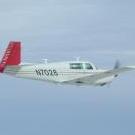

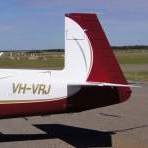
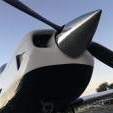



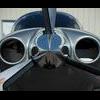



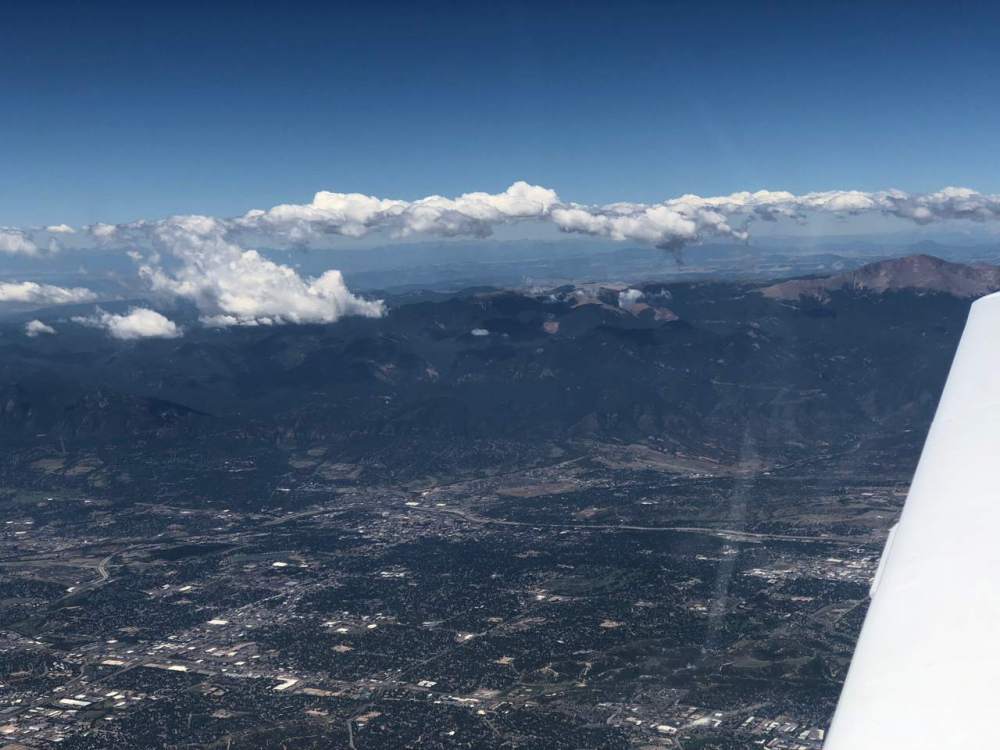
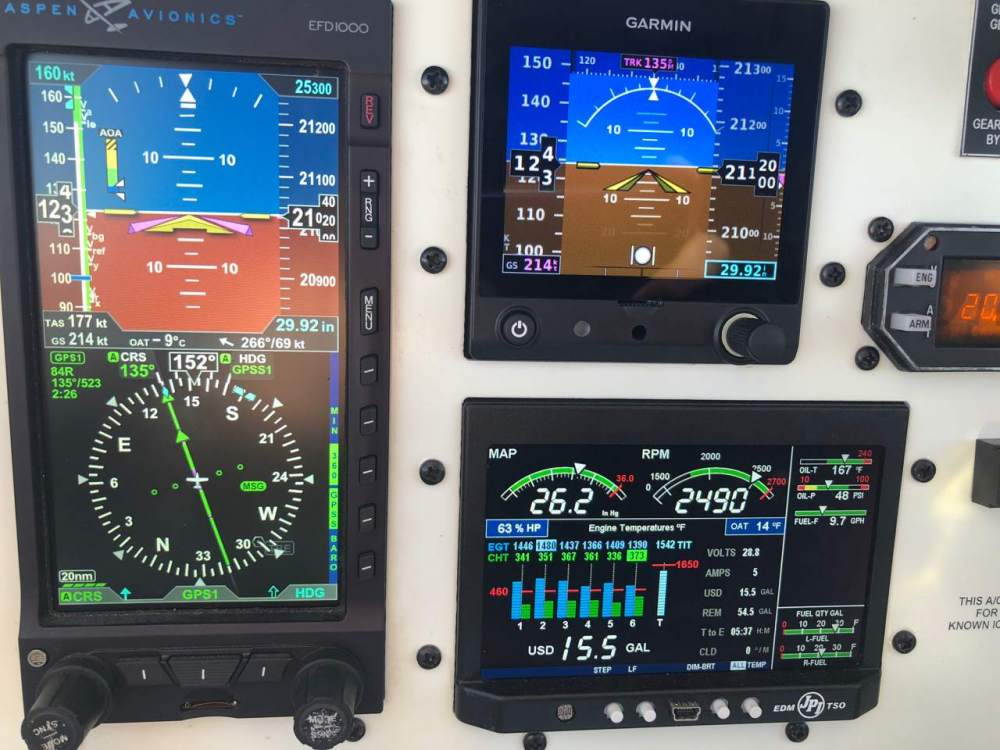
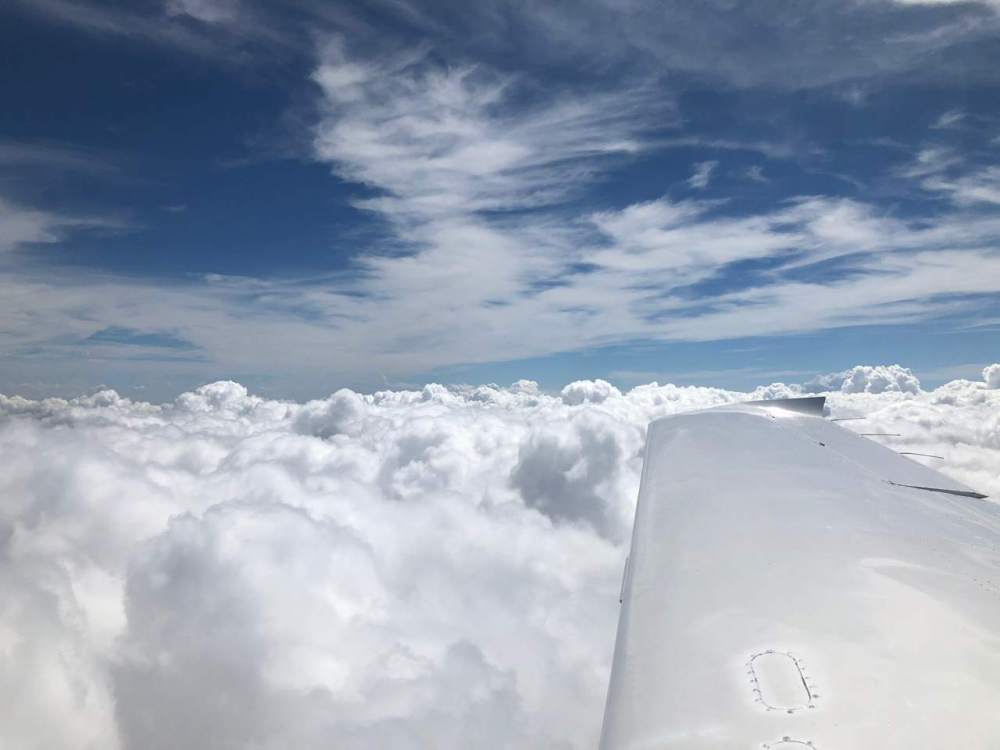
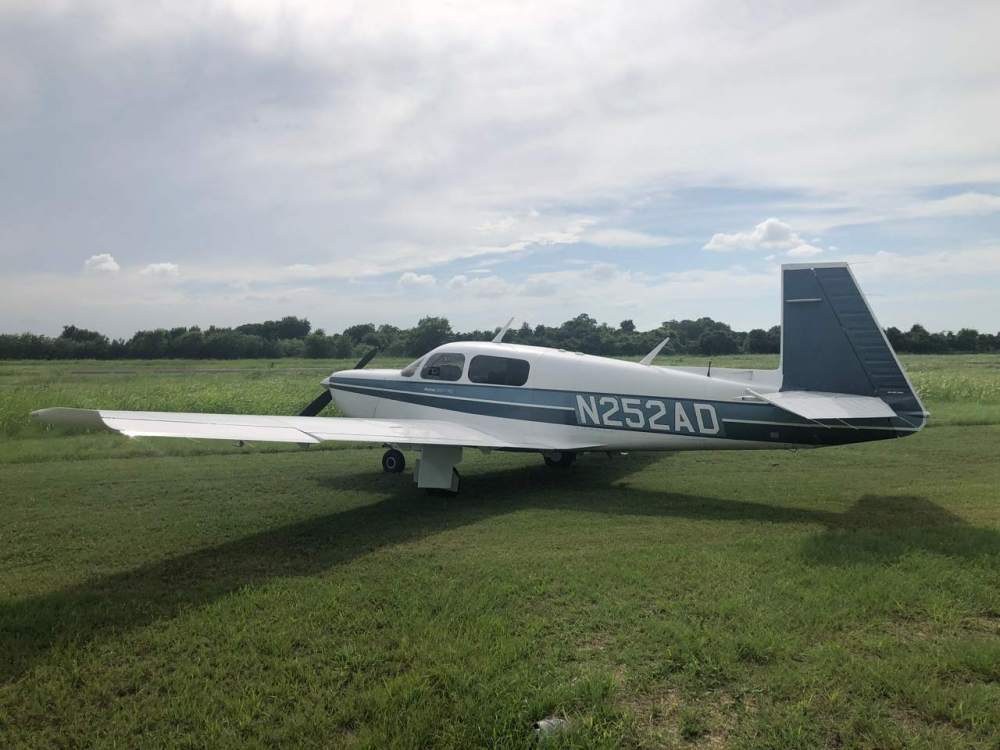
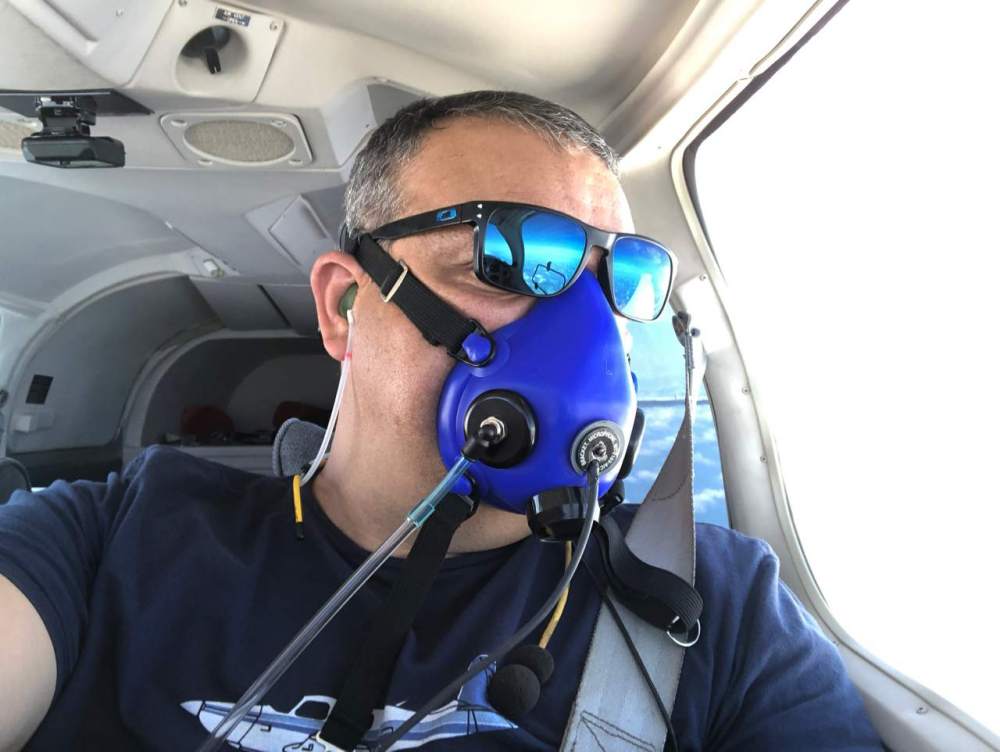
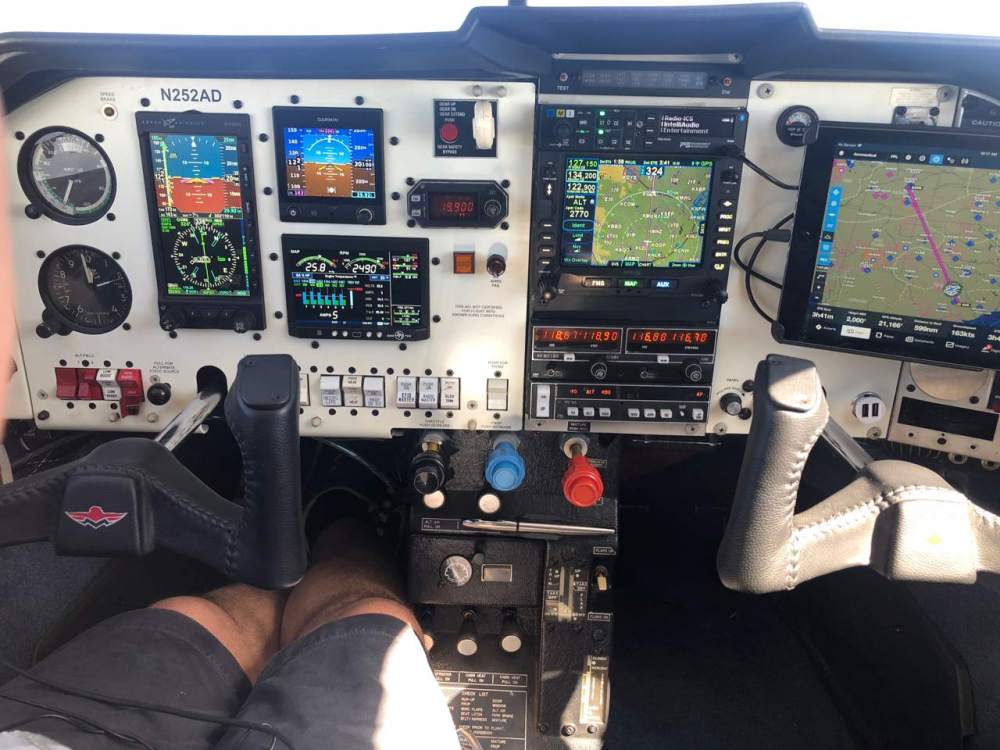
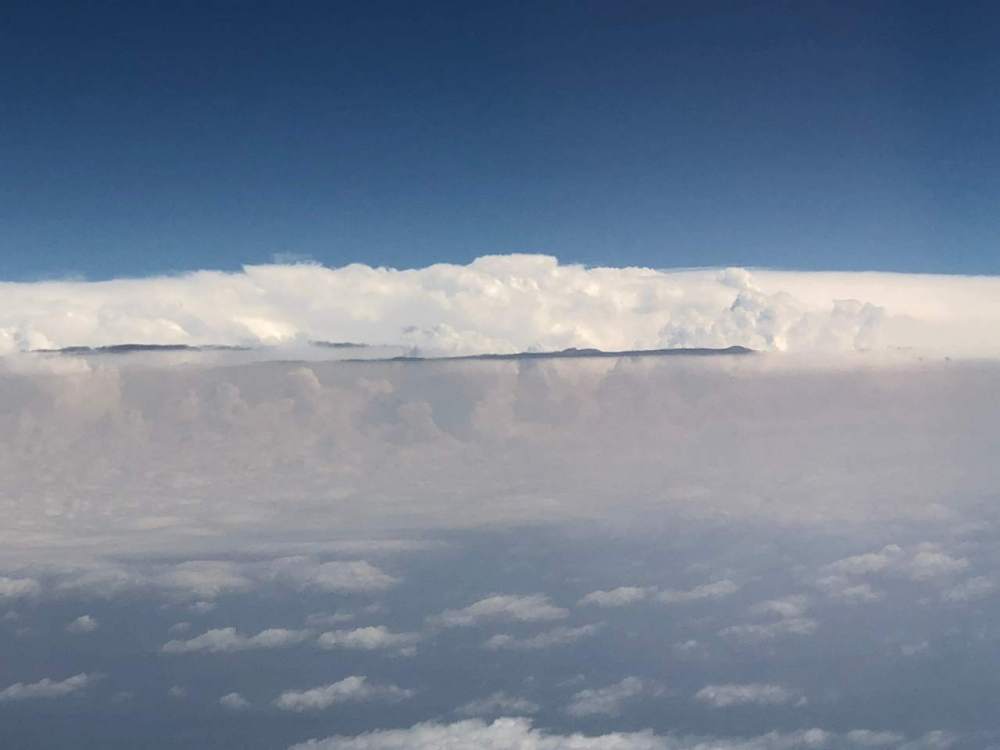
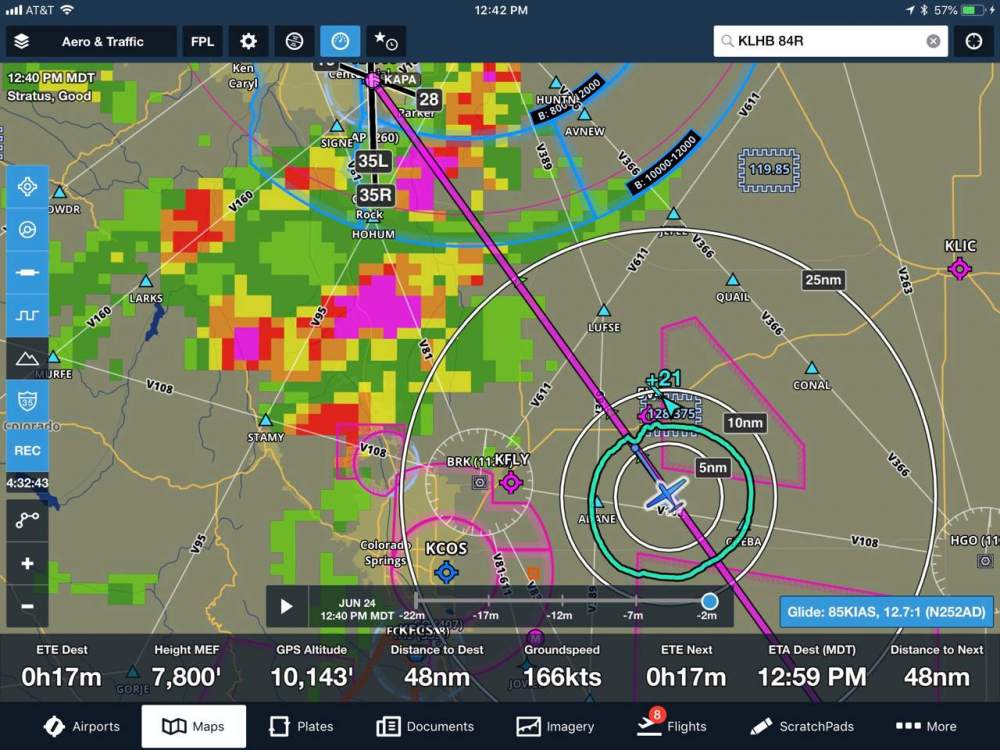




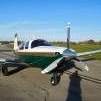



.thumb.jpg.3b7e6053543e5b3f345615b9eb4a086e.jpg)
